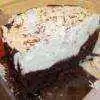-
Welcome to Celiac.com!
You have found your celiac tribe! Join us and ask questions in our forum, share your story, and connect with others.
-
Celiac.com Sponsor (A1):
Celiac.com Sponsor (A1-M):
-
Get Celiac.com Updates:Support Our Content
Mashed Potato Pie
-
Get Celiac.com Updates:Support Celiac.com:
-
Celiac.com Sponsor (A17):
Celiac.com Sponsor (A17):
Celiac.com Sponsors (A17-M):
-
Recent Activity
-
- chrisinpa commented on Scott Adams's article in Latest Research13
The Hidden Role of Vitamin D in Celiac Disease and Other Chronic Inflammatory Conditions
I will add my thanks also. My list of supplements are very similar also..- celiac disease
- chronic inflammation
- (and 8 more)
-
- DonnaNM commented on Scott Adams's article in Latest Research13
The Hidden Role of Vitamin D in Celiac Disease and Other Chronic Inflammatory Conditions
Thank you for your responses (especially your detailed article on all the supplements, so helpful.). I take a lot of supplements as well. I will check them.- celiac disease
- chronic inflammation
- (and 8 more)
-
- Scott Adams commented on Scott Adams's article in Latest Research13
The Hidden Role of Vitamin D in Celiac Disease and Other Chronic Inflammatory Conditions
The most common nutrient deficiencies associated with celiac disease that may lead to testing for the condition include iron, vitamin D, folate (vitamin B9), vitamin B12, calcium, zinc, and magnesium. Unfortunately many doctors, including my own doctor at the time, don't do extensive follow up testing for a broad range of nutrient deficiencies, nor recommend...- celiac disease
- chronic inflammation
- (and 8 more)
-
- Scott Adams replied to Rejoicephd's topic in Coping with Celiac Disease7
Draft gluten-free ciders… can they be trusted ?
I'd go with a vodka tonic, but that's just me😉




Recommended Posts
Archived
This topic is now archived and is closed to further replies.